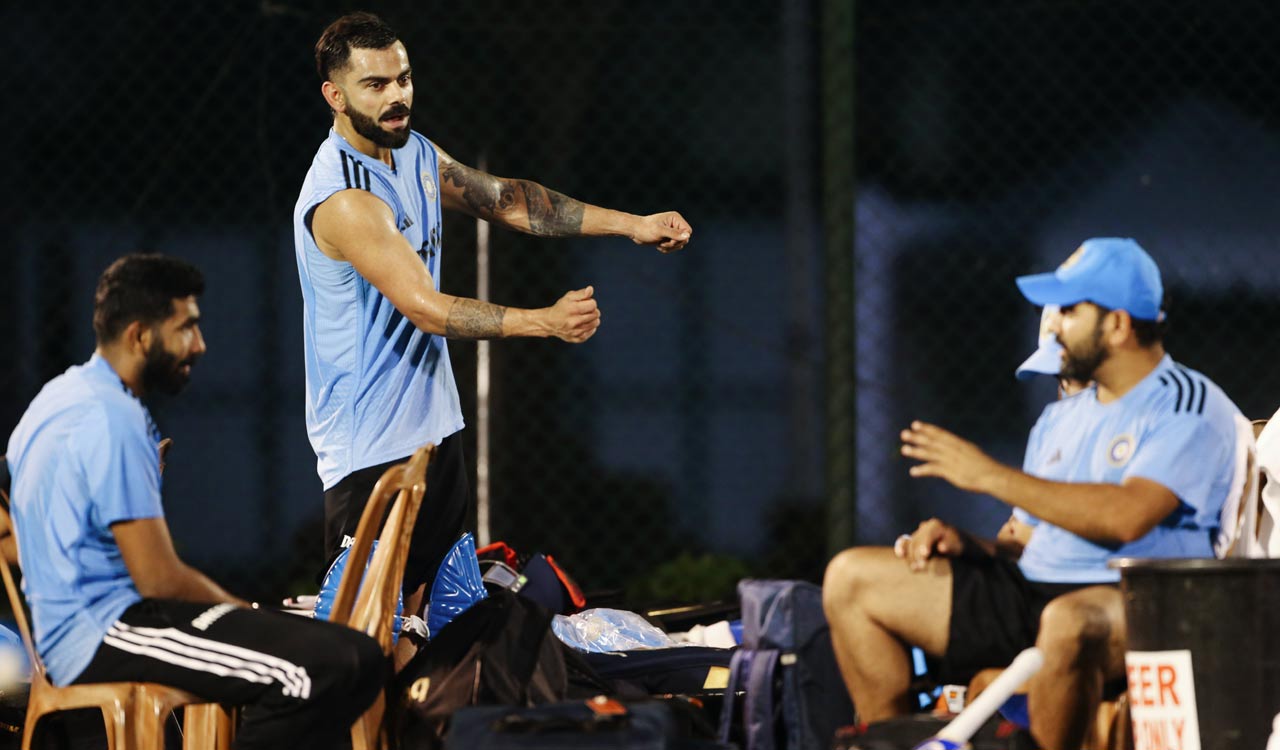
Alongside focusing on the team goals, the Indian management will want to assemble the best possible 11 in the park against Pakistan, whom the Rohit Sharma-led outfit is facing for the second time in the event
Published Date - 08:00 AM, Sun - 10 September 23
Colombo: The Indian team management’s predicament to choose between KL Rahul and Ishan Kishan will be the dominating theme amid the usual edgy emotional quotient, when they face arch-rivals Pakistan in the most-awaited Super 4 match of the Asia Cup here on Sunday.
Alongside focusing on the team goals, the Indian management will want to assemble the best possible 11 in the park against Pakistan, whom the Rohit Sharma-led outfit is facing for the second time in the event. But for that, they need to find answers for the aforementioned puzzle, and hope that rains will stay away despite adding a controversial reserve day to the match on Monday.
The return of Rahul to the squad has widened the pool of players to select from, but that has also given them a happy headache. Kishan has impressed everyone in the last month or so, smashing four fifties in as many matches – three against the West Indies and one against Pakistan in the Asia Cup Group A match at Pallekele last week.
During the process, Kishan has also diversified himself, underlining his comfort in positions ranging from opening to No. 5. The 25-year-old Jharkhand man opened the innings against the Caribbeans while batted in the middle-order against Pakistan. Additionally, Kishan brings in a bit of variety to the Indian batting line-up as he is a left-hander.
So, it seems that Kishan has everything going for him. But Rahul’s claim for the No. 5 position is hard to ignore despite the fact that the Bengaluru cricketer has not played an ODI since March this year, courtesy a thigh injury and the ensuing phase of post-surgery convalescence.
The 31-year-old remains one of India’s steadiest ODI batters since 2019. In that year, he made 572 runs from 13 matches at 47.67. The trend continued in the following years – In 2020: 443 runs from 9 matches at 55.38, in 2021: 108 runs from 3 matches at 88.50, in 2022: 251 runs from 10 matches at 27.89 and in 2023: 226 runs from 6 matches at 56.50.
If one filters the stats further, while batting at No. 5, Rahul has amassed 742 runs from 18 matches at 53 with a hundred and seven fifties. Those are strong numbers and his wicket-keeping offers an additional arrow in the quiver. Rahul also engaged in intense wicketkeeping drills at nets on Friday, further indicating his readiness to make the return.
So, the team management will have to take a hard call on the match day. While that decision is important for the team to achieve the desired balance, they will also be eager to start the Super 4 with a win notwithstanding the combination they field.
Pakistan have already bagged two points after beating Bangladesh by 7 wickets at Lahore, and another win will place them comfortably on the way to the final. So, India will also want to enter the log sheet but they will have to counter a potent Pakistan bowling attack that can make an impact irrespective of the nature of the pitch.
Of course, Rohit and other Indian batters will be wary of the high-paced incoming deliveries of Shaheen Shah Afridi, but the Pakistan bowling unit has other equally explosive performers. Haris Rauf, with his express pace, is currently topping the Asia Cup bowling chart with 9 wickets from three matches, and seemed to have emerged from the shadows of Afridi (7 wickets).
While Naseem Shah also has taken 7 wickets, ensuring no let off point for opposition batters. Pakistan has an edge on paper in this department, but India will believe that they have the ammunition to strike back in kind.
The return of Jasprit Bumrah, who skipped the league match against Nepal, will bolster India’s bowling, while Mohammed Siraj and Shardul Thakur can play the efficient support cast role. But once these two teams enter the arena, factors like playing 11, form, past records etc go irrelevant. It will be a storm force collision on the field.





Leave a Reply